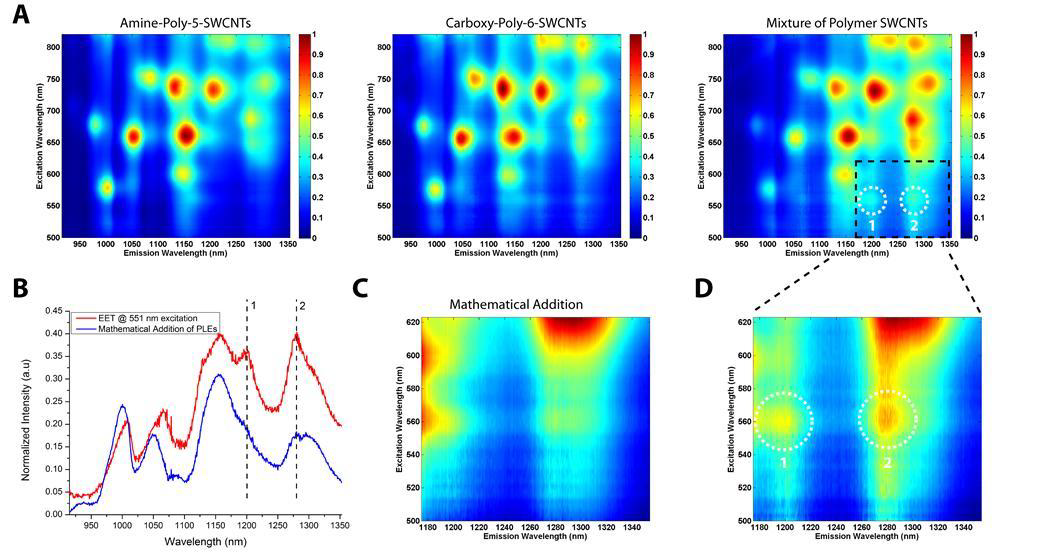Dan Heller and coworkers at Memorial Sloan-Kettering Cancer Center describe important advances in noncovalent functionalization of carbon nanotubes in a recent issue of Journal of the American Chemical Society (
DOI: 10.1021/ja505529n). Carbon nanotubes are uniquely valuable biophotonic probes due to their intense, non-quenchable emission within the NIR-SWIR tissue transparency window from 900-1600 nm. Encapsulating CNTs with helical polymers enables switchable modulation of the photoluminescence intensity and excitonic energy transfer between individual CNTs, as shown in [Figure S5 from Supporting Information] . The researchers used a Princeton Instruments IsoPlane SCT-320 spectrograph and Pio-NIR (now NIRvana) imaging InGaAs detector in this work.

Figure S5. Photoluminescence of nanotubes undergoing INEET.
A) Photoluminescence excitation/emission (PL) plots of Amine-Poly-5-SWCNTs, Carboxy-Poly-6-SWCNTs, and a 1:1 mixture of the two. After mixing and incubation of the mixture for 40 hours, emission peaks in the short wavelength excitation/long wavelength emission range (circled and numbered 1 and 2) were enhanced. B) Spectra showing distinct enhancement of emission peaks (at 1200 nm and 1280 nm) upon excitation of the polycarbodiimide-SWCNTs mixture at 551 nm. Emission peaks resulting from EET in the experiment were compared with the spectra constructed by mathematical addition of individual amine and carboxylic acid polymer-encapsulated SWCNT. The spectra were extracted from the PL plots shown in A. C) PL plot from mathematical addition of individual amine and carboxylic acid polymer-SWCNTs, and D) An expanded region in PL plot of the mixture in A.
